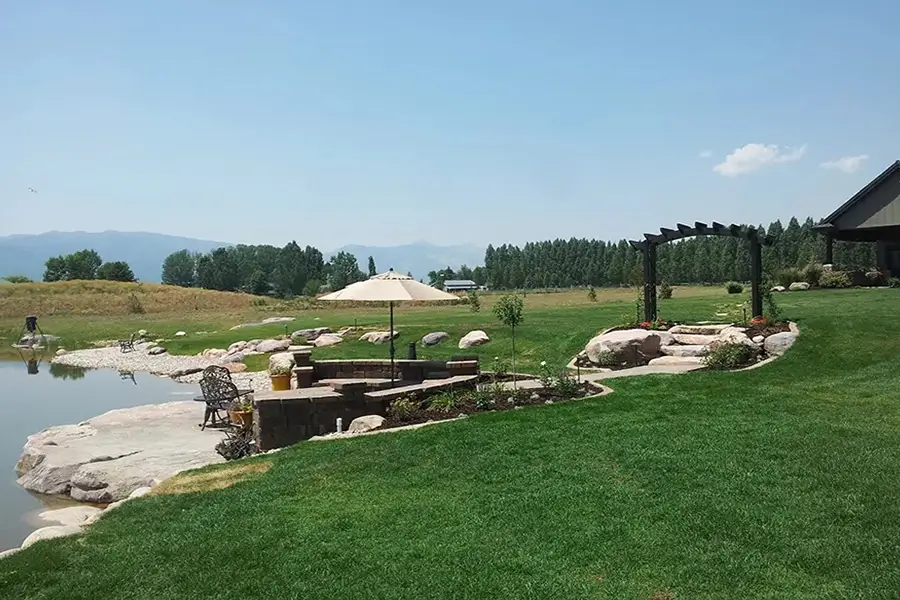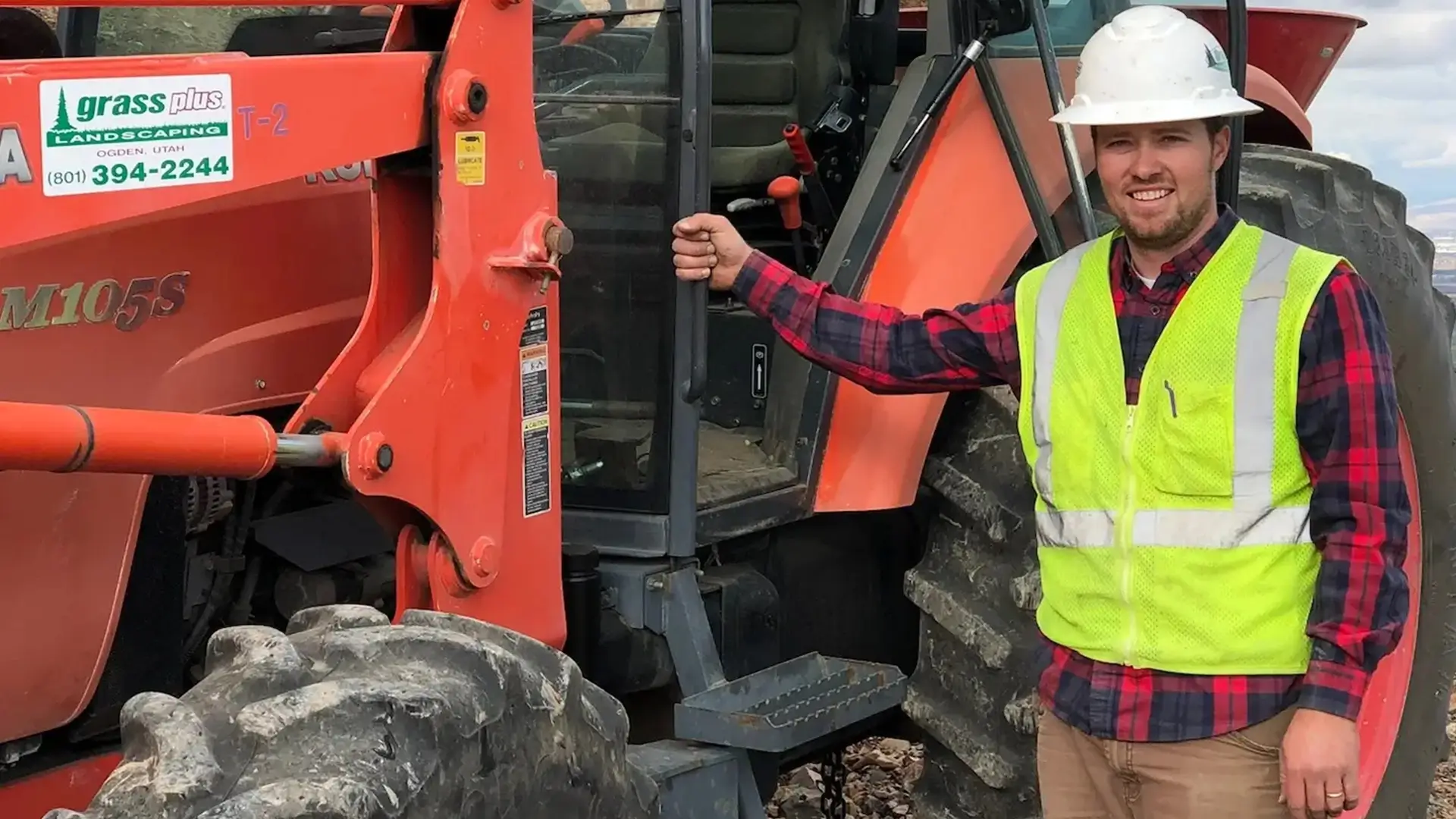Reclamation
Restore and stabilize the condition of your land by hiring Grass Plus, Inc. for professional reclamation services.

Professional Reclamation Service
Human activities, usually mining- and construction-related, can cause land degradation and environmental disruption. Reclamation plays a vital role in solving issues such as soil erosion, loss of vegetation, and the disruption of natural habitats. It aims to restore the land to its original or improved condition by implementing strategies like soil stabilization, vegetation establishment, and land contouring.
Grass Plus, Inc. provides reliable reclamation services. Our expert team thoroughly assesses every site, develops comprehensive reclamation plans, and executes them with precision. We utilize advanced equipment, eco-friendly materials, and sustainable practices to ensure effective and long-lasting results. Rely on us to transform degraded sites into thriving and ecologically balanced landscapes.
Our Land Reclamation Process
Grass Plus, Inc. follows a comprehensive process to ensure successful land reclamation. Here is an overview of our reclamation process:
1. Assessment and Planning
Grass Plus, Inc. begins by conducting a thorough assessment of every site, taking into account the specific goals of the project. We analyze soil quality, water availability, and ecosystem requirements. Based on our assessment, we develop a detailed reclamation plan that outlines the strategies and techniques we intend to implement.
2. Site Preparation
The next step involves preparing lands for reclamation. This may include soil testing, amendment, grading, and contouring to create optimal conditions for vegetation growth. Grass Plus, Inc. ensures that every site we work on is ready to support the establishment of a diverse and sustainable ecosystem.
3. Vegetation Establishment
Grass Plus, Inc. specializes in selecting and planting native plant species that are well-suited to a site’s specific conditions. We employ various techniques such as hydroseeding, broadcast seeding, and drill seeding. These methods ensure efficient site coverage and promote the successful growth of a diverse plant community.
4. Erosion Control
Soil erosion prevention is a crucial aspect of reclamation. We offer erosion control measures such as erosion control blanket installation, straw blowing, and stilt fence installation. These provide protection against erosion and facilitate the establishment of vegetation roots, stabilizing the soil, and reducing the risk of sediment runoff.
5. Monitoring and Maintenance
Grass Plus, Inc. recognizes the importance of ongoing monitoring and maintenance to ensure the long-term success of reclamation projects. We conduct regular site inspections, assess plant growth and health, and make any necessary adjustments or interventions.
Other Reclamation & Erosion Control Services
Get In Touch
- Email Us
- (801) 394-2244
-
554 E. 2200 N. Eden,
UT 84310 -
Monday to Friday,
9 AM to 5 PM




Creating Beautiful Utah Landscapes Since 1993
The Importance of Reclamation in Land Restoration
Methods that intend to restore and protect the state of land can provide additional benefits. With reclamation, there are many such advantages that can compel one to render the service. Here are the important ones:
1. Land Restoration
Reclamation involves remediating polluted or contaminated sites, rehabilitating mined areas, and rejuvenating landscapes affected by natural disasters. It restores degraded and damaged land to its original state and actively improves the overall health and quality of the land.
2. Soil Health and Fertility
With measures such as soil amendment, erosion control, and revegetation, reclamation actively improves soil structure, nutrient content, and water-holding capacity. Active restoration of soil health supports plant growth, enhances agricultural productivity, and provides a foundation for ecosystems to thrive.
3. Ecosystem Preservation
Reclamation plays an active role in preserving and protecting natural ecosystems. It aims to conserve biodiversity, protect wildlife, and maintain ecological balance. Reclaimed lands provide habitat for native plants and animals, promote ecological connectivity, and contribute to overall ecosystem resilience.
4. Water Quality and Conservation
Reclamation projects include developing water management systems, such as wetlands, ponds, and irrigation networks. These water management systems, in turn, improve water quality by filtering pollutants and controlling runoff. Reclamation also promotes water conservation by implementing efficient irrigation methods and restoring natural water flows.
5. Sustainable Land Use
Reclamation promotes sustainable land use practices by transforming degraded land into productive and sustainable landscapes. It encourages the active adoption of responsible resource management, such as sustainable agriculture, forestry, and renewable energy development.
6. Climate Change Mitigation
Reclamation contributes to climate change mitigation by sequestering carbon dioxide through revegetation and restoring natural carbon sinks. Reclaimed lands act as carbon sinks that help reduce greenhouse gas emissions and combat climate change.
FAQs
Here are some of the most asked questions regarding reclamation:
1. What is reclamation?
Reclamation is the process of restoring and rehabilitating land that has been disturbed or degraded by activities such as mining, construction, or industrial operations. It involves restoring the land to a productive or environmentally stable state through various techniques and practices.
2. What types of sites require reclamation?
Sites that may require reclamation include abandoned mines, quarries, landfills, industrial facilities, construction sites, and areas affected by natural disasters. Any site where human activities have caused significant land disturbance or environmental degradation may require reclamation efforts.
3. What are the steps involved in the reclamation process?
The steps may vary depending on every site and its specific requirements. However, the process typically involves site assessment and planning, soil remediation, erosion control, re-vegetation or habitat restoration, monitoring, and long-term maintenance.
4. How long does the reclamation process take?
The duration of the reclamation process can vary significantly depending on factors such as the size and complexity of the site, the extent of the disturbance, the desired outcome, and local regulations. It can take months to several years, or even decades, for a site to be fully reclaimed and restored.
5. What challenges are there during the reclamation process?
Reclamation projects can face challenges such as soil contamination, erosion control difficulties, invasive species colonization, long-term maintenance requirements, and the need for financial resources. Addressing these challenges requires careful planning, site-specific considerations, and adaptive management approaches.
6. Who is responsible for reclamation?
The responsibility for reclamation varies depending on the project and local regulations. In many cases, it is the responsibility of the entity that caused the land disturbance or degradation, such as a mining company or a developer. Regulatory agencies often enforce reclamation requirements and may oversee the process.
7. What techniques are involved in reclamation?
Reclamation techniques can include soil stabilization, grading and reshaping of landforms, habitat restoration, water management (such as the creation of wetlands or ponds), and the monitoring of the progress of restoration efforts.
8. Are there regulations or permits associated with reclamation?
Yes. Local, regional, and national governments may have specific requirements and guidelines for reclamation activities. Permits may be required to ensure compliance with environmental standards and monitor the progress of reclamation efforts.
9. What are the benefits of reclamation for communities?
Reclamation provides several benefits for communities, including job creation during the reclamation process, improved environmental conditions, and sustainable land use and economic development.
10. Can reclamation affect the impact of climate change?
Yes. Reclaimed areas with healthy vegetation can reduce soil erosion and runoff, enhance water filtration and storage, and provide habitat for wildlife. Reclamation projects incorporating climate-resilient practices can help build more resilient landscapes and contribute to climate change mitigation and adaptation strategies.
11. How do you measure the success of a reclamation project?
The success of a reclamation project is shown through various indicators, such as the establishment and growth of vegetation, water quality improvement, soil stability, and the return of ecosystem functions. Monitoring programs can help assess these factors over time and determine the effectiveness of the reclamation efforts.
Why Choose Us
- Providing Professional and Quality Services Since 1993
- Specializing in a Diverse Range of Projects in Utah, Wyoming, Colorado, and Idaho
- Restoring and Stabilizing Your Land With Your Vision in Mind

Get In Touch
- Email Us
- (801) 394-2244
-
554 E. 2200 N. Eden,
UT 84310 -
Monday to Friday,
9 AM to 5 PM
Contact Grass Plus, Inc. Today
Restore your land by contacting Grass Plus, Inc. for quality land reclamation today! If you have any inquiries regarding our land reclamation services, don’t hesitate to reach out to our expert team. We’ll do our absolute best to help you!


